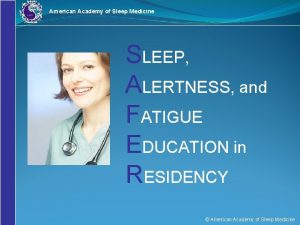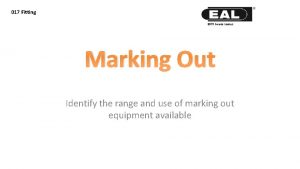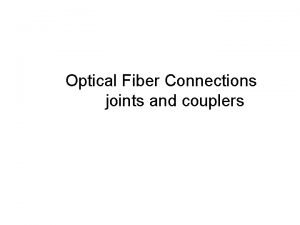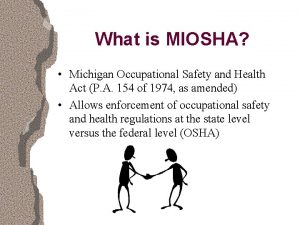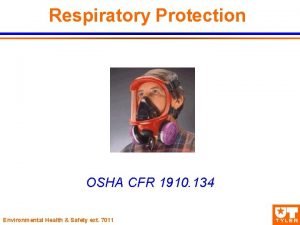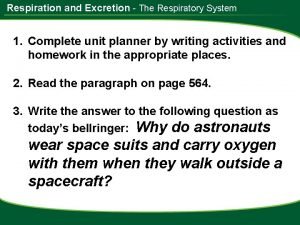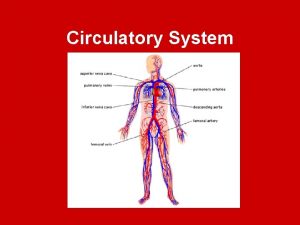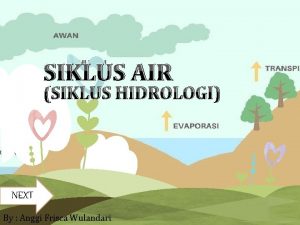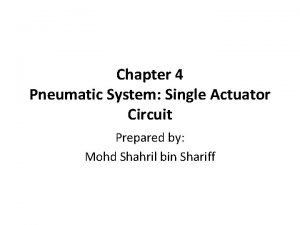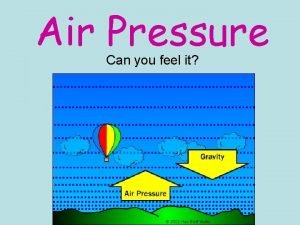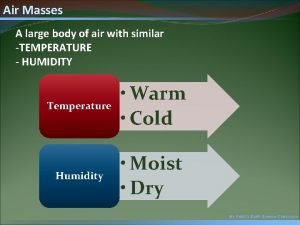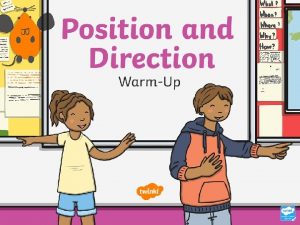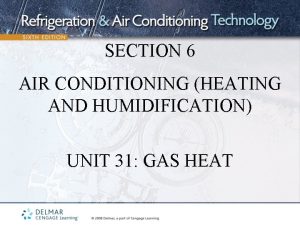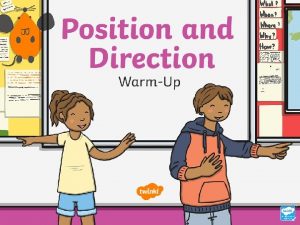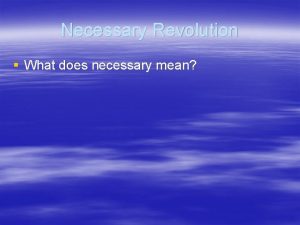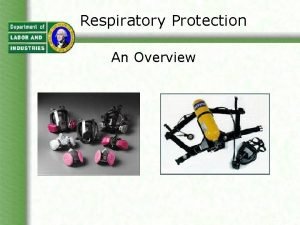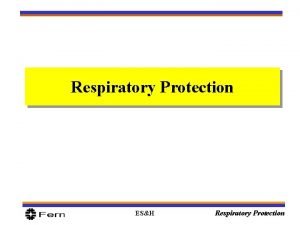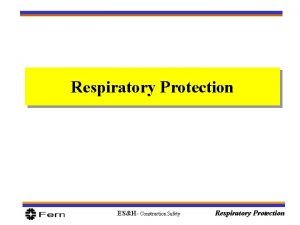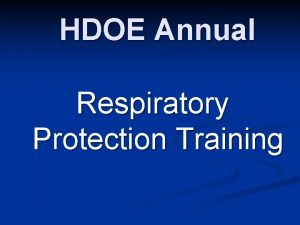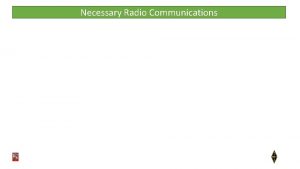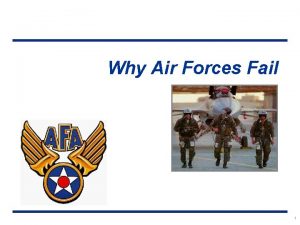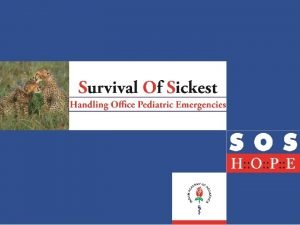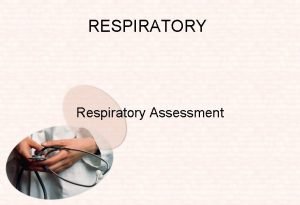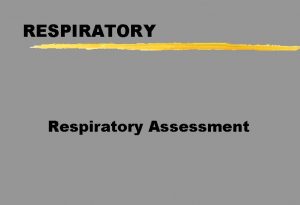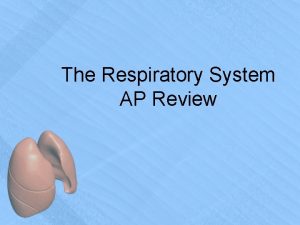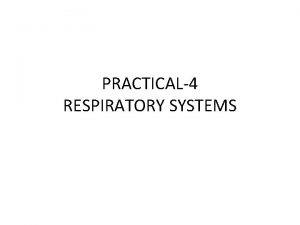Respiratory Protection Why respiratory protection is necessary Air


























- Slides: 26

Respiratory Protection

Why respiratory protection is necessary • Air contaminants/hazardous atmospheres come from a variety of sources • dusts • aerosol mists • metal fumes 1 a

Why respiratory protection is necessary • Air contaminants/hazardous atmospheres come from a variety of sources • • • evaporated vapors released gases oxygen-deficient atmospheres 1 b

Why respiratory protection is necessary • Many operations generate air contaminants • filling bins with flour • degreasing metal parts • spraying operations • welding 1 c

Why respiratory protection is necessary • Find out how much contaminant is in the air • Test the air to find out what the exposures are 1 d

Why respiratory protection is necessary • If results show an overexposure, take steps to control the hazard • engineering controls • administrative controls • PPE 1 e

Respirator types • Atmosphere-supplying • supplied air • self-contained breathing apparatus (SCBA) • demand • positive pressure • escape-only 2 a

Respirator types • Air-purifying • filter • canister or cartridge 2 b

Respirator types • Air-purifying • negative pressure • powered air-purifying 2 c

Fit, usage, and maintenance • Employees must pass a fit test • quantitative fit • qualitative fit • Use the respirator as it was designed 3 a

Fit, usage, and maintenance • Follow operating instructions • If respirators are used to enter an IDLH atmosphere: • one trained, rescueequipped employee must remain outside • an attendant must maintain communication contact 3 b

Fit, usage, and maintenance • During interior structural firefighting • at least 2 employees with SCBA must enter together and stay in contact with each other • at least two people trained and equipped for rescue must remain outside 3 c

Fit, usage, and maintenance • A dirty, inoperative respirator will not protect you 3 d

Inspection, donning, doffing respirators • Inspect respirators before each use and during cleaning • Inspect SCBAs monthly and keep cylinders fully charged 4 a

Inspection, donning, doffing respirators • Emergency-use respirators: • inspect monthly • tags must show inspection results • Follow instructions to inspect and don/doff equipment 4 b

Inspection, donning, doffing respirators • Perform seal checks after donning respirator • positive pressure test • negative pressure test • review Appendix B-1 • Never enter a work area without a good respirator seal 4 c

Cleaning, maintenance, and storage • Respirators must be cleaned to remove contaminants/prevent irritation • Shared respirators must be cleaned before each use 5 a

Cleaning, maintenance, and storage • Emergency-use respirators must be cleaned after each use • Review Appendix B-2 for cleaning/disinfecting instructions • Only use manufacturer’s replacement parts 5 b

Cleaning, maintenance, and storage Storage helps prevent respirators from: • Damage • Excessive • Contamination moisture • Dust • Chemicals • Sunlight • Deformation of the facepiece • Temperature extremes 5 c

Responding to emergencies • If the respirator malfunctions, immediately leave the work area • Activate auxiliary selfcontained air supply 6 a

Responding to emergencies • If a sudden hazardous release occurs, don emergency escapeonly respirators as you exit the area 6 b

Responding to emergencies • Some employees must be trained and authorized to respond to emergency situations • confined space rescue • release of hazardous chemicals • interior structure firefighting 6 c

Medical signs and symptoms • Know how to recognize and report medical signs and symptoms that may limit or prevent the effective use of respirators • Shortness of breath • Dizziness 7 a

Medical signs and symptoms • Coughing • Wheezing • Chest pain 7 b

Medical signs and symptoms • Chest injuries • Lung diseases • Cardiovascular conditions 7 c

Medical signs and symptoms • Heart conditions • Review Appendix C: OSHA Respirator Medical Evaluation Questionnaire 7 d
 Andreas carlsson bye bye bye
Andreas carlsson bye bye bye Air higroskopis air kapiler dan air gravitasi
Air higroskopis air kapiler dan air gravitasi Domain 4 ppst
Domain 4 ppst यगत
यगत Why is sleep necessary
Why is sleep necessary Dot punch angle
Dot punch angle Types of optical fiber joint
Types of optical fiber joint Conducting zone of the respiratory system function
Conducting zone of the respiratory system function Michigan occupational safety and health act
Michigan occupational safety and health act Osha 1910-134
Osha 1910-134 Dont ask why why why
Dont ask why why why Gas diffusion
Gas diffusion The path of air through the respiratory system
The path of air through the respiratory system The air passageway
The air passageway Pathway of air in respiratory system
Pathway of air in respiratory system Community air protection program
Community air protection program Air di bumi selalu tersedia lantaran adanya... *
Air di bumi selalu tersedia lantaran adanya... * Air termasuk pelarut organik atau anorganik
Air termasuk pelarut organik atau anorganik Pneumatic circuit examples
Pneumatic circuit examples Chapter 12 section 1 what causes air pollution
Chapter 12 section 1 what causes air pollution Can you feel it in the air in the air
Can you feel it in the air in the air A large body of air
A large body of air Two cold air masses converge on a warm air mass
Two cold air masses converge on a warm air mass Right hand in the air left hand in the air
Right hand in the air left hand in the air Air atmosfer atau air materai
Air atmosfer atau air materai Return air and supply air
Return air and supply air Right hand in the air left hand in the air
Right hand in the air left hand in the air




